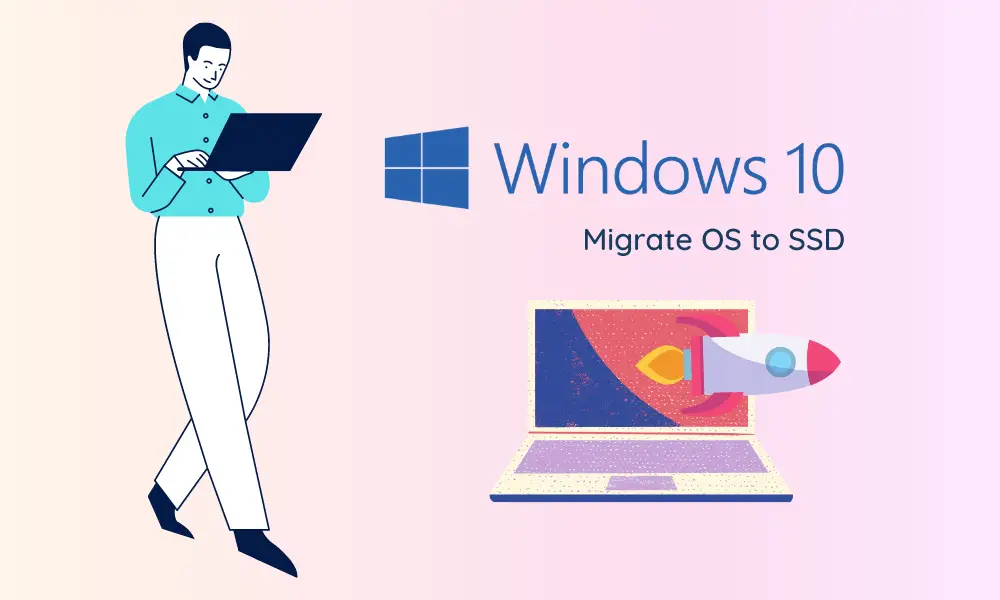✍ Last Updated on January 2, 2025 by Nick Cullen (Senior Content Editor)
We have published this article to help you migrate your Windows OS to SSD from your old HDD without putting your existing data at risk. But, there are a few essential things that you should understand. Let’s get started!
For the past decades, the regular hard disk drive (HDD) has secured the dominant computing storage position. Still, companies like Dell, HP, Lenovo, Toshiba and Asus use traditional HDD in their budget-friendly laptops (with core i3 or Ryzen 3 processor) in order to keep the price low.
You should know that HDDs need mechanical parts to move to the appropriate place while reading and writing digital data. Therefore, it takes time to access or store data and makes noise during the process. But you don’t need to worry, if your laptop has dedicate slot for SSD then you can take advantage of it.
Recently, a new generation storage device – SSDs or solid-state drives are gradually replacing HDDs. It is speedier, secured, and noise-free when comparing to the HDD. It uses flash memory to write and read data instead of spinning magnetic platters. Unlike HDD, SSD doesn’t need a mechanical movement and helps you to reduce loading time when you boot up your PC.
But, SSDs have a drawback that they are more expensive than HDDs. Although they are getting more affordable than ever before, SSDs can still cost more than double or triple that of HDDs.
Benefits of migrating Windows OS to SSD
Many people buy an SSD to migrate Windows OS and keep other data saved on the old HDD. If you use your PC for gaming, video editing, or graphic designing, you should migrate your OS files to SSD to get a smooth and fluid running experience. But the reinstalling system and other applications can be a long process. Don’t worry, AOMEI Partition Assistant will make your work easy!
The best solution is to migrate the system to the SSD when users upgrade a storage drive. System migration (cloning) directly transfers Windows system partition from the old hard disk to the new SSD. So, it is a procedure and helps you save some time that you may have wasted in a long reinstallation process.
Now you know the benefit and may be wondering how to choose a reliable and powerful cloning software to migrate OS to SSD in Windows 10, 8, or 7?
Powerful freeware for migrating OS to SSD
AOMEI Partition Assistant is a popular free partition manager for system and disk migration in Windows 10, 8, 7. It brings a feature known as “Migrate OS to SSD,” assisting you copying system partition from an MBR disk to an MBR SSD/HDD. And it has an intuitive interface that simplifies the cloning operation, and you will be able to finish it in a few clicks.
Besides, AOMEI Partition Assistant comes with the following reach features to meet your different cloning requirements:
- Clone entire disk: It allows you to not only clone your Windows OS but also migrate all data to SSD by choosing the “Disk Clone Wizard” feature.
- Clone larger disk to smaller disk: Because of SSD price, your SSD probably is smaller than the source disk. Luckily, AOMEI Partition Assistant supports cloning the larger disk to a smaller SSD as long as the SSD has enough space to save the data.
- Resize Partition: It permits you to edit the partition on the destination drive during the process.
- SSD partition alignment: Aligning the SSD partition can further increase the performance. And you can decide if your SSD needs alignment after completing the cloning process.
Migrate OS to SSD in Windows 10, 8, 7
Connect the SSD to your Windows PC, and follow the steps to migrate your Windows OS to SSD:
1. Install and open the AOMEI Partition Assistant Standard. Select “Migrate OS to SSD” from the “Wizards” column.
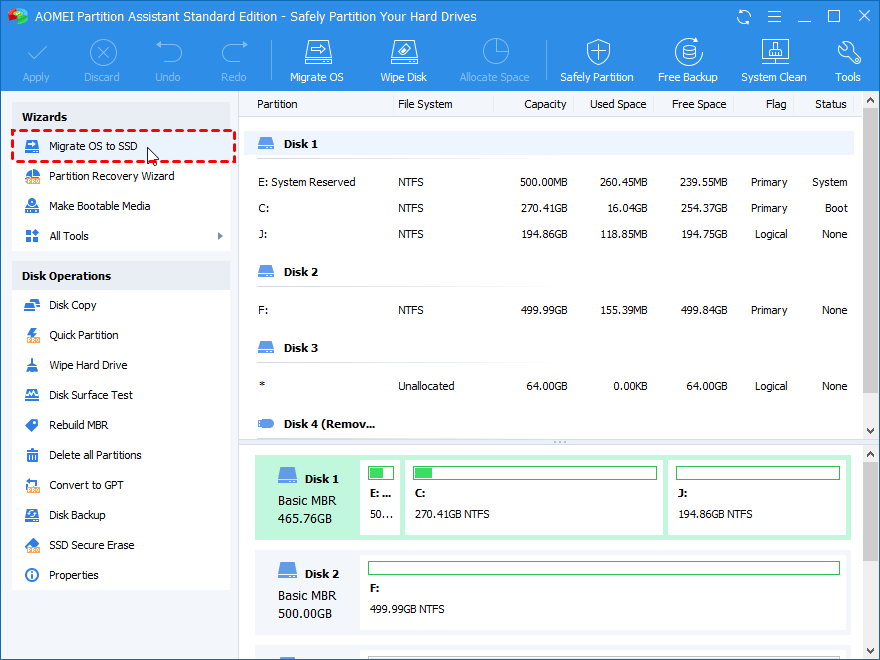
2. Choose the unallocated space on your SSD. If it has no unallocated space, you will need to delete partitions. Then click “Next”.
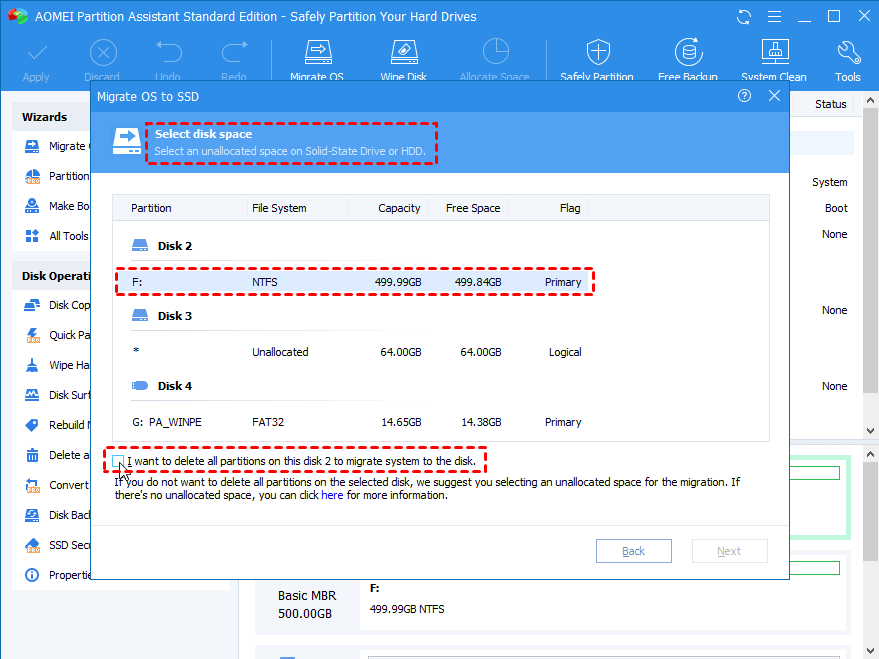
3. If needed, you can edit the SSD partition information, including the drive letter, partition size, etc. Afterward, click “Next”.
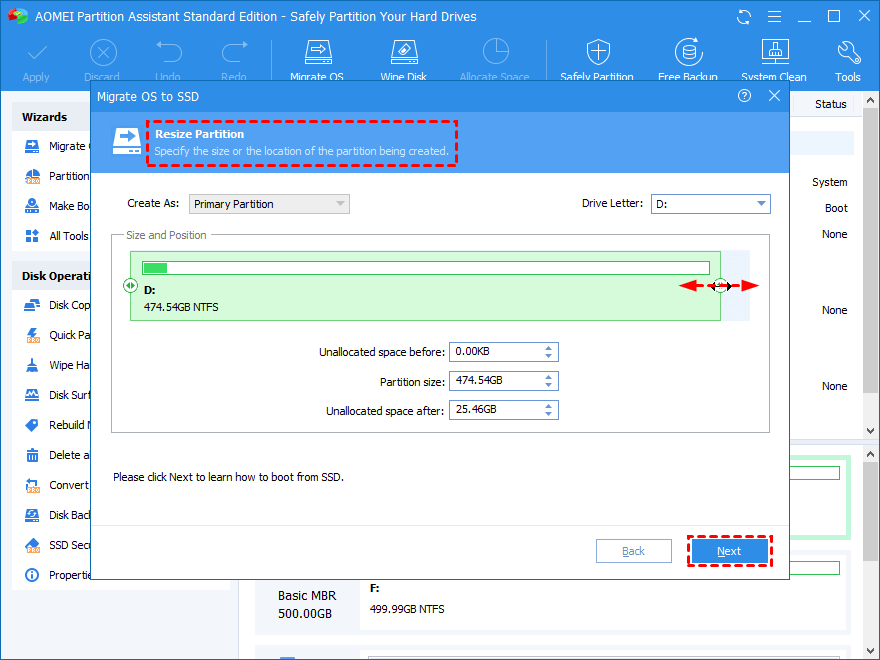
4. Read the outcome of the operation on the main interface. And then click “Apply” in the left top of the window to commit the operation.
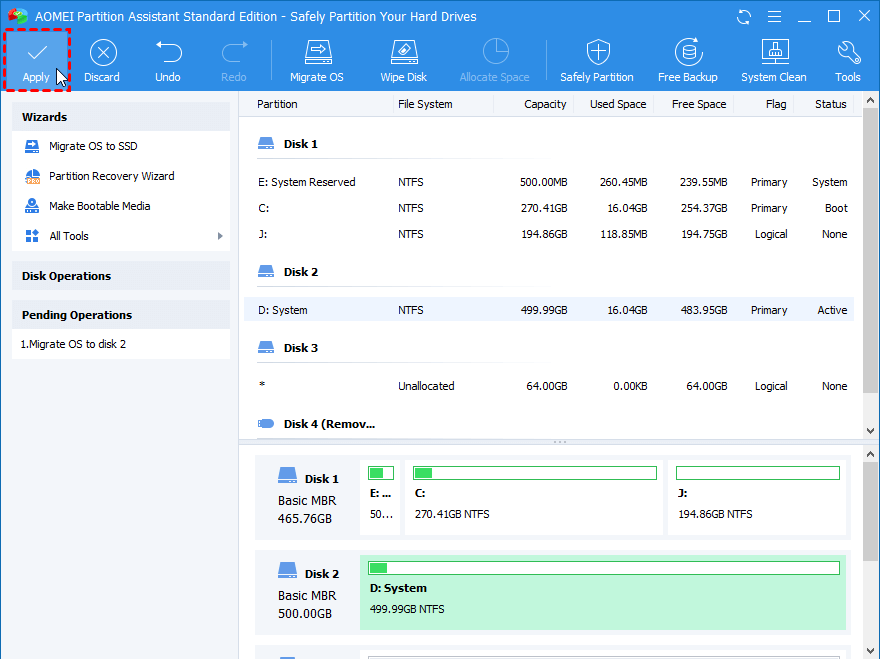
5. Wait for a while and let the AOMEI Partition Assistant software clone your Windows OS to the SSD.
You May Also Like to Check:
- SketchUp Alternatives to create 3D graphics
- Rabbit Alternatives to watch movies with your friends
- Kahoot Alternatives to create and play quizes
- Games Like Clash of Clans to have some extra fun at home
Conclusion
AOMEI Partition Assistant is one of the most reliable software to easily migrate Windows OS from traditional HDD to new SSD. The cloning process will only take a few minutes, and your Windows PC will be ready to use. Since SSDs produce a higher data transfer rate than HDDs, your computer’s performance will increase dramatically.
Additionally, AOMEI Partition Assistant works as a disk management software and provides comprehensive support to manage disks and partitions. For example, after cloning, you can use the software to completely wipe out the old HDD to prevent sensitive data from getting stolen. And to make full use of your new SSD, AOMEI Partition Assistant will help you create more partitions on it.

